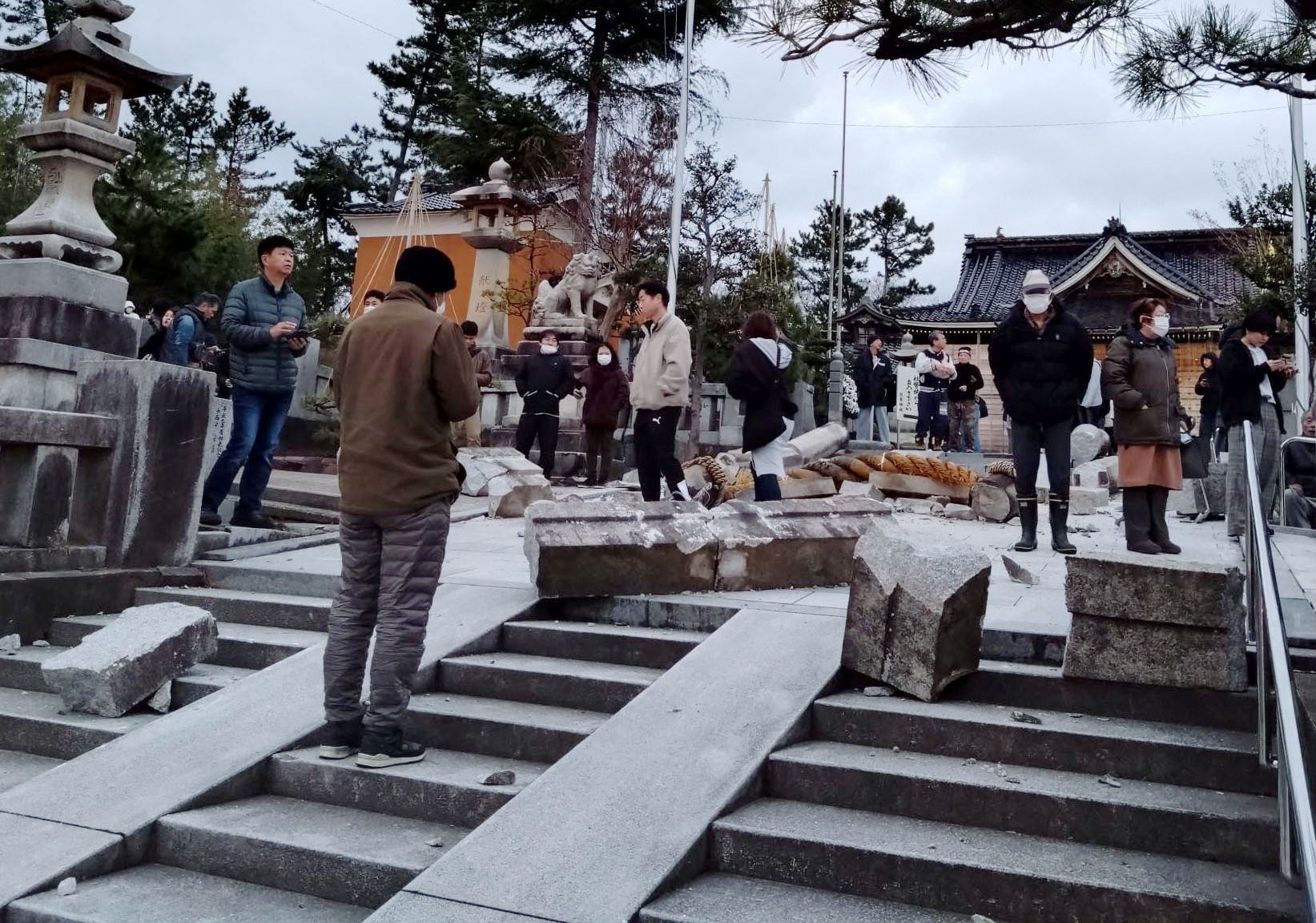By Tim Kelly and Sakura Murakami
TOKYO (Reuters) – A robust earthquake with a preliminary magnitude of 7.6 struck central Japan on Monday, prompting urgent evacuation advisories for residents in coastal areas. The seismic event disrupted power supply to thousands of homes, causing widespread transportation interruptions, including flight and rail services in the affected region.
The quake induced approximately 1-meter waves along segments of the Sea of Japan coast, with the anticipation of larger waves, as reported by public broadcaster NHK. The Japan Meteorological Agency promptly issued tsunami warnings for the coastal prefectures of Ishikawa, Niigata, and Toyama, marking the first significant warnings since the devastating March 2011 earthquake and tsunami in northeastern Japan.
A major tsunami warning implies the potential for waves exceeding 3 meters (yards). Russia also issued tsunami alerts in its far eastern cities of Vladivostok and Nakhodka.

Prime Minister Fumio Kishida, in remarks aired on NHK, emphasized the need for residents to remain vigilant against potential aftershocks. “Residents need to stay on alert for further possible quakes, and I urge people in areas where tsunamis are expected to evacuate as soon as possible,” Kishida stated.
“Run!” flashed a bright yellow warning on NHK, advising specific coastal area residents to evacuate promptly. NHK footage depicted a building collapsing in a plume of dust in the coastal city of Suzu, with residents in Kanazawa city seeking shelter under tables as tremors shook their homes. The quake also affected buildings in the capital, Tokyo, on the opposite coast.
In the aftermath, more than 36,000 households lost power in Ishikawa and Toyama prefectures, according to utility provider Hokuriku Electric Power (9505.T). High-speed rail services to Ishikawa were suspended, while telecom operators Softbank (9434.T) and KDDI (9433.T) reported disruptions to phone and internet services in Ishikawa and Niigata.

Japanese airlines ANA (9202.T) and Japan Airlines (9201.T) experienced significant disruptions, with ANA redirecting four planes midair and Japan Airlines canceling most flights to Niigata and Ishikawa for the remainder of the day.
As concerns arose about the impact on nuclear facilities, Japan’s Nuclear Regulation Authority stated that no irregularities were detected at nuclear power plants along the Sea of Japan. The 2011 earthquake and tsunami had resulted in nuclear meltdowns in Fukushima.
The quake, occurring on the Jan. 1 public holiday, disrupted traditional New Year temple visits, with residents in affected areas urged to remain cautious and follow evacuation directives.
Images from Kanazawa, a popular tourist destination, revealed the remnants of a collapsed torii gate at a shrine entrance. In Wajima, collapsed houses and a significant crack along a concrete road heightened the sense of urgency.
Reporting by Tim Kelly, Satoshi Sugiyama, Kantaro Komiya, Sakura Murakami, Chang-Ran Kim and the Tokyo newsroom; Writing by John Geddie; Editing by Kim Coghill and Neil Fullick


